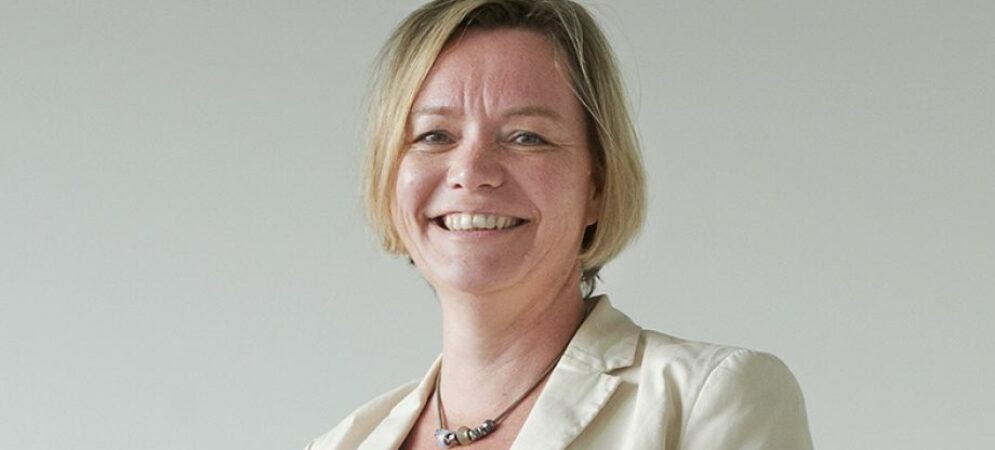Meet Natasja Paulssen
Natasja Paulssen is the creative director of Dutch Rose Media, specialized in the development of creative and sustainable AR-concepts, as well as the founder of 4DR Studios, the first volumetric video studio in The Netherlands.
Dutch Rose Media stands for the craftmanship. Through knowledge, experience and taking care of the right proportions and refinement, they deliver AR-concepts of the highest possible quality.
4DR Studios is bringing soul to digital through capturing every natural motion and the subtlest details of reality in 3D.
1. How did you get your idea or concept for the business?
In 2011 I wrote a blog about a technology that I had been following for a couple of years: augmented reality. I did some research and came upon a new technology platform in the UK, which was formerly part of HP/Autonomy, a well-known search engine. A major software that was repurposed from image search to augmented reality, other than newly developed on the other side of the world in South Korea, I saw a new application of augmented reality: a man scanned a wall in a metro station. The wall showed shelves from a store and by scanning the products, he could buy them immediately. This was turning a traditional marketing channel (poster on a wall) into a sales channel. And a sales channel is much more expensive. Hence, there was money on the table!
2. What’s your company’s vision?
We want to make the world a little bit better, by using our technologies to improve the way we visualize and tell stories.
3. What is unique about your business?
We tell stories in 3D using the latest and greatest technology, combining our creative and technical skills to the max.
4. What is your biggest achievement so far?
Last year we started a volumetric capture (volcap) studio, 4DR Studios, to enhance our storytelling capabilities even further. Volcap creates film-quality 3D people that make the augmented reality experience come alive. Since there were no studios available within 600km, we decided to do it ourselves and organized the funding and implementation. Furthermore, we organized a R&D program to explore the applications for volcap, together with the Dutch ministry of trade and Regional economic fund ‘Metropool Regio Eindhoven’. In one year, we will create 20 volcap productions together with 50 national and international makers that will explore and push the boundaries of what is possible with volcap.
5. How do you see your company in 10 years?
10 years is an eternity in our business from a technical perspective. However, we will probably still be creating immersive stories using the latest and greatest technologies. We will have grown to cover more expert skills working in even more multidisciplinary teams. We will have integrated different technologies for easier use for ourselves, our clients and the audience. Our storytelling capabilities will have grown both creatively and technically to produce even more immersive and enticing stories.
6. What are you like as an employer?
First and foremost: we all will have to work for a pretty long time before any pension comes in view. Therefore you’d better be doing something that you like. A life-work balance is incredibly important in times where online blends all time together. We will work less hours, but be more flexible. We don’t have a max number of holidays, only a minimum demand to at least have a 2-week consecutive holiday once a year. The team steers the growth & direction of the company. By expressing their future personal targets, the team sets the direction for the overall strategy.
7. What do you think are the biggest challenges facing the XR industry? How do you deal with them?
One of the biggest challenges for XR is the accessibility for the broader audience. We need many people to enjoy our productions to get things going. But how will they access content in a meaningful way? We have no YouTube, no national or commercial broadcasters, no (or hardly any) cinemas, no (or only with baby steps) generic app/browser. Individual experiences with HMD’s are hardly shareable. We see steps from both sides (both content-side and hardware-side), but there is still a serious canyon to cross.
8. How do you handle adversity and doubt?
We don’t. Our clients are within their respective markets the innovators and early adopters. If they don’t believe in what we are trying to achieve together they are not the right client.
9. If you had one piece of advice to someone just starting out in VR/AR, what would it be?
Focus. Pick a vertical market or horizontal skill and be great at what you do.
10. What is one habit you wish you could break?
Well maybe not completely break, but we often deliver much more in a project than the client is paying for, just because we want to deliver the best we can think of. Commercially this is not always the best choice, but it ensures we have many happy clients.
11. What does creativity mean to you?
The world . For us, it is finding solutions that realize a concept where others would find the technology lacking.
12. What book has inspired you the most?
Book?
OK. The moving photographs in the Harry Potter series, or perhaps the different perspectives in ‘Alice in Wonderland’, any ‘magical realism’ from Johan Daisne or Hubert Lampo. All are insanely good at creating a world that could be real. You want it to be real.
13. What do you do when you’re not at work?
I have 3 kids, 14,16 and 17 years old; and my husband and I try to coach them into being really nice people.
14. Who do you see as an inspiration in the industry? (Please name up to 3 people from the XR industry)
Steye Hallema
Marnix van Gisbergen
Cassandra de Klerck
